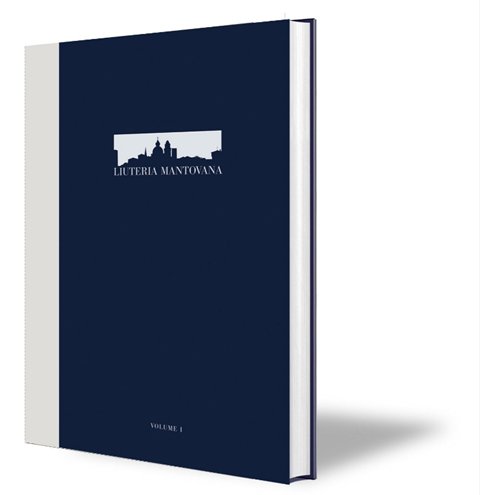
Liuteria Mantovana Vol.1
Andrea Zanrè, Philip Kass
312PP ISBN 9788890719462
Scrollavezza e Zanrè
€693 (subscription) €990 (cover price)
In the collective imagination, the city of Mantua represents one of the most refined jewels of the Italian Renaissance. As a result of the union of the houses of Gonzaga and d’Este, through the marriage in 1490 of Duke Francesco II with Isabella, the Gonzaga court became the engine of an artistic renewal that placed architects, painters, musicians and luthiers as key figures in the city. From Isabella’s letters we know about the refined works of Lorenzo Gusnago da Pavia, and of the friar Pietro Dardelli who celebrated the glory of the Gonzaga with the construction of a lute decorated in gold and silver. However, when Pietro Guarneri came to the city as a court musician around 1680, the splendour of musical life was in decline and the duchy, owing to the unfortunate politics of Duke Ferdinando Carlo, was leading the territory towards its final collapse.
Mantua’s history and in its violin making milieu have now been investigated in the meticulous work undertaken by Philip Kass and Andrea Zanrè, who in Liuteria Mantovana give a coherent and complete picture of the work and lives of the great Mantuan craftsmen.
The starting point for this book was the research conducted by historian Giovanni Livi in the 1920s for the Hills’ book dedicated to the Guarneri family. The authors, who pay tribute to this work in their own book, have managed to solve the main puzzles, eliminating inconsistencies in the biographies of the most important protagonists. Kass and Zanrè focus on the strong personality of the Mantuan violin making style and the reasons that determined it: the great influence of Pietro Guarneri on successive generations of luthiers; the poor opportunities that the market offered to luthiers and the consequent lack of circulation of instruments from other schools in the city; and finally the conditions, often of severe destitution, that characterised the lives of renowned luthiers such as Antonio Zanotti and Camillo Camilli. Both of these, unlike Pietro Guarneri, had to manage many difficulties in their working life. For these two makers in particular, the authors have been able to reconstruct in detail the biographical events that correct previous historical errors and consequent false attributions.
This volume, the first of a series of three, presents biographical information and a wide overview of the work of Zanotti, Camilli and Pietro Guarneri, accompanied by an accurate organological analysis conducted in collaboration with Rudolf Hopfner. The construction technique of each author is examined in the smallest detail and thanks to the support of 3D scans and CT microtomography it was possible (in the case of Pietro Guarneri) to present a very interesting comparison with the moulds used by Antonio Stradivari in the same period.
The book is accompanied by photographs by Jan Röhrmann, whose images are not only highly accurate but also convey the naturalistic nuances of the violin that are so difficult to capture. Finally, the book is distinguished by the accuracy of the information, for the clear and fine writing, and for the narrative that propels the reader into the fascinating world of Mantuan life.
ALBERTO GIORDANO
